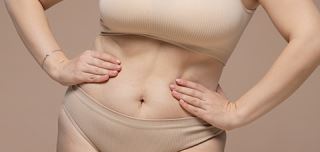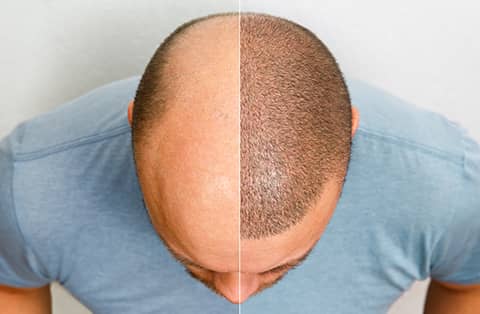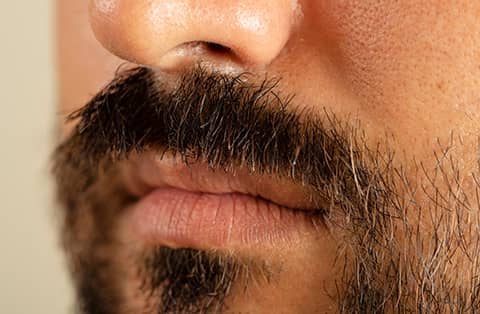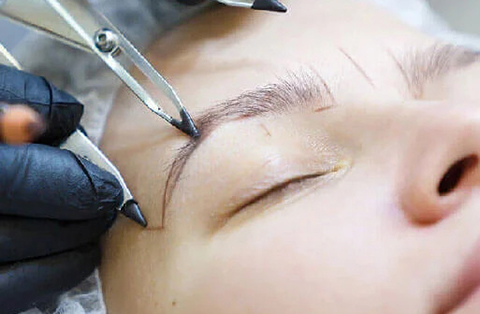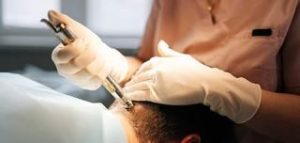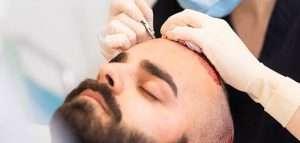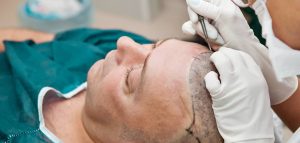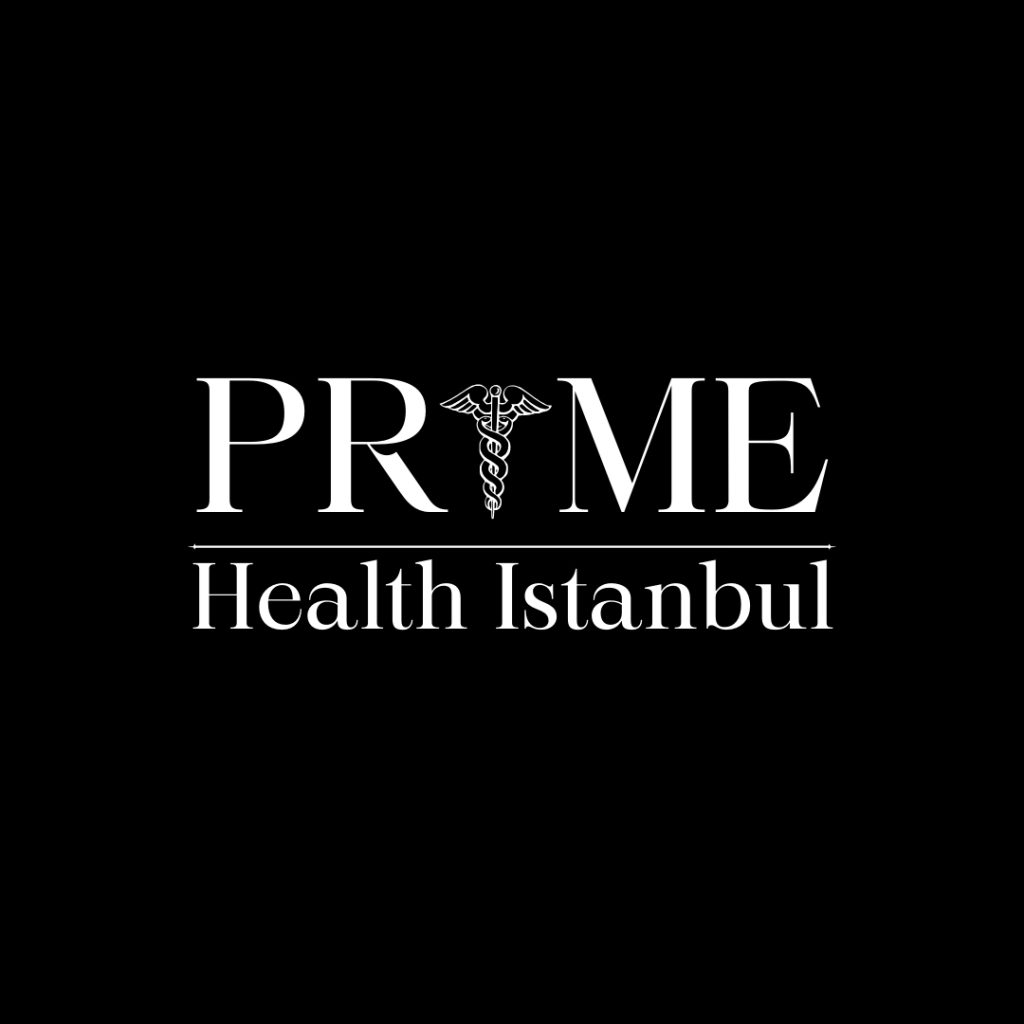Are you considering a tummy tuck to achieve a flatter, firmer abdomen? Abdominoplasty can transform your midsection by removing excess skin and tightening muscles. However, recovery is a crucial part of the process, and understanding the healing stages can help you plan better.
From scar development to belly button healing, each phase of recovery brings its own challenges and milestones. This article will guide you through the timeline, so you know what to expect during each step of your journey. Discover how your body heals after a tummy tuck and what you can do to support optimal results.
How Long Does It Take to Heal from a Tummy Tuck Surgery?
Healing from a tummy tuck surgery typically takes around 6 to 8 weeks. Most patients can return to light activities within 2 to 3 weeks, but full recovery, including the healing of scars and muscle tightening, takes longer.
Swelling, bruising, and discomfort are common in the first few weeks, gradually improving over time. While you’ll start feeling better after a month, complete healing of the scar tissue and deeper layers can take several months.
It’s important to follow your plastic surgeon’s post-operative care instructions to ensure smooth and effective recovery.
Why the type of tummy tuck matters?
The type of tummy tuck matters because different techniques address varying levels of skin, fat, and muscle concerns, which affect recovery time, scarring, and results.
A mini tummy tuck targets the lower abdomen with a smaller incision and shorter recovery period. In contrast, a full tummy tuck involves more extensive work, removing excess skin and tightening muscles across the entire abdomen, leading to a longer recovery and more noticeable scarring.
Additionally, some patients may require an extended tummy tuck to remove skin around the hips or a circumferential tummy tuck for more comprehensive body contouring. Each method is tailored to specific needs, influencing the healing process and final outcome.
The Stages of Tummy Tuck Recovery
Recovering from a tummy tuck is a step-by-step process that unfolds over several months. Each stage of healing plays a crucial role in achieving your desired results and ensuring your body heals properly.
Understanding these stages can help you manage expectations and prepare for the changes you’ll experience along the way.
Immediate Post-Surgery Stage (First 1-2 Days) – Initial recovery with hospital stay or monitored care.
Early Healing Stage (First Week) – Managing swelling, bruising, and discomfort; limited movement.
Subacute Recovery Stage (Weeks 2-4) – Gradual return to light activities; reduced pain and swelling.
Mid-Recovery Stage (Weeks 4-6) – Increased mobility; most daily activities resume.
Late Recovery Stage (Weeks 6-8) – Near full recovery; swelling decreases, scars begin to mature.
Long-Term Healing Stage (Months 3-12) – Scar fading and final muscle healing continue; full results visible.
Recovery Timeline After Abdominoplasty
Immediate Post-Surgery Stage (First 1-2 Days)
Hospital Stay and Monitoring
Patients may stay in a hospital or outpatient center for observation.
Monitoring vital signs, pain levels, and drainage output.
Assistance with mobility as movement will be very limited.
Pain and Discomfort
Grogginess from anesthesia may last for several hours.
Pain and discomfort around the abdomen are managed with prescription painkillers.
Bruising and swelling are normal and will peak in this period.
Surgical Drain Care
Drains may be inserted to remove excess fluids, reducing the risk of complications.
Patients will be instructed on how to care for and empty these drains.
Incision and Scar Care
The incision will be covered with dressings or bandages.
Scar tissue begins forming immediately, with redness and swelling common.
Early scar healing is fragile; keeping the area clean and protected is vital.
Belly Button Care
If the belly button was repositioned, it may appear swollen or bruised.
Special care, including cleaning and monitoring for infection, will be required.
Compression Garment
A compression garment will be provided to reduce swelling and support healing.
This garment helps prevent fluid buildup and improves contouring.
Rest and Mobility
Strict bed rest is required, with limited movement to avoid straining the abdominal muscles.
Assistance with walking or getting out of bed will be necessary.
Early Healing Stage (First Week)
During the first week of recovery, your body begins to adjust after plastic surgery, but this stage still requires careful management. Pain and swelling will gradually decrease, though discomfort remains present, especially when moving or coughing. Prescription pain medication may still be necessary, but many patients start transitioning to over-the-counter options.
Scar Healing
Your incisions will remain tender, and the scar tissue is still in its early stages of healing. The scar may appear raised, red, or pink during this time, which is completely normal. It’s important to keep the incision sites clean and dry to avoid infection. Your surgeon may recommend applying specific ointments or keeping the area protected with bandages.
Belly Button Care
If your belly button was repositioned, this area will need extra attention. It may appear swollen or crusted over as it begins to heal. Your surgeon will provide instructions on how to clean the area gently. Keeping it clean and following care guidelines is crucial to avoid infection and ensure proper healing.
Drain Removal and Fluid Management
If surgical drains were placed, they may be removed toward the end of this week, depending on fluid output. Your plastic surgeon will monitor the amount of fluid being collected and will decide the appropriate time to remove them.
Compression Garment Use
The compression garment will continue to play an essential role in managing swelling and supporting the healing tissues. You’ll need to wear it as instructed, usually 24/7, except when showering.
Mobility and Activity
While strict rest is still required, you should begin moving carefully to promote circulation and prevent blood clots. Light walking is encouraged, but avoid any strenuous activity or heavy lifting. Most patients will still need help with basic tasks, such as getting in and out of bed or walking short distances.
Follow-up Appointments
Your plastic surgeon will likely schedule a follow-up appointment within the first week to check on your progress, remove any drains, and assess incision healing.
Subacute Recovery Stage (Weeks 2-4)
In the subacute recovery stage, your body continues to heal, and you’ll notice a significant reduction in pain, swelling, and bruising. While you’ll start feeling more comfortable, it’s essential to remain cautious about your activity level to prevent complications and ensure proper healing.
Scar Healing
By weeks 2 to 4, the incision scars will begin to mature, though they will still appear red or pink and slightly raised. You might notice some itching around the scar area, which is a sign of healing. Scar care becomes more important at this stage, and your plastic surgeon may recommend scar creams or silicone sheets to minimize the appearance of the scars over time. Avoid direct sun exposure to the incision sites, as UV rays can cause the scars to darken.
Belly Button Healing
If your belly button was repositioned, healing should be well underway. Any initial swelling or discoloration should start to diminish, although the area might still appear slightly inflamed. It’s important to continue cleaning the belly button area according to your surgeon’s instructions to prevent infection. The stitches around the belly button may begin dissolving or may be removed during this period.
Swelling and Bruising
Swelling and bruising will gradually decrease by the end of this stage, although some mild swelling may persist, especially toward the end of the day or after physical activity. The use of a compression garment will still be necessary to reduce swelling and support healing.
Compression Garment Use
You will likely still be required to wear your compression garment most of the time, though some surgeons may allow brief breaks depending on your progress. Wearing the garment helps to shape your new abdominal contours and prevent fluid buildup.
Mobility and Activity
During this stage, you can begin increasing your activity level, though it should still be light. You’ll be able to move more easily and may start doing simple daily activities. However, avoid heavy lifting, vigorous exercise, or any movements that might strain your abdomen. Walking short distances is encouraged to maintain circulation, but you should continue to be mindful of your body’s limits.
Follow-up Care
You will likely have another follow-up appointment during this stage to check your progress. The plastic surgeon will assess your healing and may provide additional guidance on scar care, drain management (if they haven’t been removed yet), and activity restrictions. If your surgeon used non-dissolvable sutures, they may be removed around this time.
As you enter this phase, you’ll begin to see the initial results of your tummy tuck, but keep in mind that your final appearance won’t be fully visible until swelling has completely subsided in the coming months.
Mid-Recovery Stage (Weeks 4-6)
During the mid-recovery stage, you’ll experience more noticeable improvements in your comfort, mobility, and appearance. Most patients feel much more like themselves by this point, though it’s important to continue following post-operative guidelines to ensure full recovery.
Scar Healing
By weeks 4 to 6, your incision scars will still be visible but should start to flatten and fade from the initial red or pink color to a lighter tone. The scars may feel firmer to the touch as they mature. Applying scar treatment products, such as silicone sheets or scar creams, as recommended by your plastic surgeon can help improve the appearance of the scars. It’s crucial to continue avoiding sun exposure on your scars, as sunlight can darken and worsen their appearance.
Belly Button Healing
At this stage, the belly button should be healing well, with any swelling or discoloration significantly reduced. It may still appear slightly red or raised, but the overall shape and position should look more natural. Cleaning the belly button as directed will still be necessary, but with less frequency. Any residual stitches around the belly button should have dissolved or been removed by now, and the area should feel less tender.
Swelling and Bruising
Most of the bruising should have resolved by now, and while swelling is greatly reduced, some mild swelling may still be present, especially in the lower abdomen. This swelling can fluctuate, particularly after prolonged sitting, standing, or physical activity. The final shape of your abdomen may not be fully visible yet, as residual swelling can take several more weeks or months to completely subside.
Compression Garment Use
You’ll likely still need to wear your compression garment, though some plastic surgeons may allow you to reduce the time spent wearing it each day. The garment helps support your abdomen as it continues healing and helps maintain your new contours by reducing any lingering swelling.
Mobility and Activity
By this stage, you should be able to resume most of your daily activities with little discomfort. Light exercise, such as walking or stretching, is generally encouraged, but you should still avoid any activities that place strain on your abdominal muscles, such as heavy lifting, high-impact workouts, or intense core exercises. Listen to your body and consult your surgeon before resuming more strenuous activities.
Follow-up Care
Another follow-up appointment with your surgeon is likely to take place during this time. The surgeon will assess your progress, check the appearance of your scars, and ensure that your belly button and abdomen are healing correctly. Based on your healing, they may give you more specific guidelines on scar care, garment use, and activity levels moving forward.
At this stage, your abdomen should start taking its final shape, but it’s important to remember that complete healing and final results, including fully matured scars, can take several more months.
Late Recovery Stage (Weeks 6-8)
By the late recovery stage, most patients feel much more comfortable and are close to resuming their normal activities. Although significant healing has taken place, it’s important to remain cautious as deeper tissues and muscles continue to heal. At this stage, you’ll see more of the results from your tummy tuck, but final results are still evolving.
Scar Healing
At this point, your scars will begin to soften and flatten. The color will gradually fade from red or pink to lighter shades, depending on your skin tone. Although the scars may still be somewhat visible, they will continue to improve in appearance over the next several months. It’s essential to continue any scar treatment your surgeon has recommended, such as silicone gels or sheets, to support the healing process. Protecting your scars from sun exposure remains crucial to avoid darkening or worsening their appearance.
Belly Button Healing
The belly button should be mostly healed by this time, with any remaining swelling or redness significantly reduced. The area should now resemble a more natural appearance, and any discomfort around the belly button should have subsided. Keeping the area clean remains important, although daily cleaning may no longer be necessary unless your surgeon advises otherwise. If the belly button was reshaped or repositioned, it should now look much closer to the final result, though some minor healing may still occur over the coming months.
Swelling and Bruising
Most of the visible bruising should be gone by weeks 6 to 8, and the majority of the swelling will have subsided. However, mild swelling may still linger, especially in the lower abdomen or after physical activity. This residual swelling is normal and can take several more months to fully disappear. You may still notice slight fluctuations in swelling, particularly in the evenings or after extended periods of standing or sitting.
Compression Garment Use
Some patients may be advised to stop wearing their compression garment around the 6 to 8-week mark, depending on their healing progress. However, in certain cases, your surgeon may recommend continuing its use for a few more weeks, especially if swelling persists. Wearing the garment as instructed will help maintain your abdominal contour and prevent any fluid buildup.
Mobility and Activity
By the end of this stage, most patients can return to more normal activities, including light exercise, but you should still avoid heavy lifting, intense abdominal exercises, or any strenuous physical activities. Gradually increasing your activity level is encouraged, but listen to your body and avoid pushing yourself too quickly. Walking, gentle stretching, and low-impact exercises are usually fine by this point, but always check with your surgeon before resuming any vigorous exercise routines.
Follow-up Care
At this stage, your surgeon may schedule another follow-up appointment to assess your healing progress. They will check the incision sites, scars, and belly button to ensure everything is healing as expected. Based on your recovery, they may provide additional recommendations for scar care, activity levels, and overall care moving forward.
In this late recovery phase, while you’re seeing significant progress, full healing, especially of the deeper tissues and muscles, is still ongoing. Your final results will continue to develop, and full scar maturation can take several more months to a year.
Long-Term Healing Stage (Months 3-12)
The long-term healing stage marks the final phase of your tummy tuck recovery. By this time, most external signs of surgery, such as swelling and discomfort, will have significantly improved, but deeper tissue healing and scar maturation will continue throughout this period. This stage is crucial for the refinement of your results, including scar fading and the final shaping of your abdomen.
Scar Healing
Between months 3 and 12, your scars will continue to mature and improve in appearance. Initially, they may still appear pink or red, but as time passes, they will fade to a lighter color, more closely matching your skin tone. By the end of this period, scars should flatten and soften, becoming much less noticeable. Proper scar care remains important throughout this stage. Continuing the use of silicone gels, sheets, or other scar treatments, as recommended by your surgeon, can help minimize their visibility. Avoiding direct sun exposure on the scars remains critical to prevent darkening or hyperpigmentation.
Belly Button Healing
By the 3-month mark, the belly button should be fully healed and settled into its new position. Any residual swelling or redness should be gone, leaving the belly button with a natural appearance. The scar around the belly button, if present, will also continue to fade and flatten, much like the other surgical scars. It should now look more defined and integrated with the overall contour of your abdomen.
Swelling and Abdominal Contour
By month 3, most of the swelling will have resolved, revealing the more defined abdominal contour you’ve been working toward. However, some patients may experience minor swelling that can come and go, especially after physical activity or by the end of the day. This is normal and may persist for up to 6 months or more in some cases. By the 6- to 12-month mark, your abdomen should reach its final shape, with tight, smooth skin and improved muscle definition.
Compression Garment Use
By now, you will likely no longer need to wear a compression garment. However, in some cases, your surgeon may recommend its use for additional support if there’s any lingering swelling or to further enhance the final contours.
Mobility and Activity
At this point, you should have fully regained your mobility and can resume all types of physical activities, including intense workouts and abdominal exercises. However, it’s important to continue listening to your body, especially if you notice any discomfort or lingering tightness. Strengthening your core gradually, through low-impact exercises, will help maintain your results and support overall health. Always check with your surgeon before engaging in any extreme or high-impact activities, as your body may still be adjusting to the changes made during surgery.
Follow-up Care
Most patients will have fewer follow-up visits during this stage, but you may still have periodic check-ins with your surgeon to monitor the progress of your scars, abdominal shape, and overall recovery. If you have any concerns, such as delayed healing, scar thickening, or changes in the appearance of your belly button, you should consult your surgeon to address them promptly.
Final Results
By the end of the 12-month mark, your final tummy tuck results should be fully visible. This includes smooth, firm skin, a well-defined abdominal contour, and a more natural-looking belly button. Scars should have faded significantly and be far less noticeable. Your tummy tuck results can last for many years, provided you maintain a stable weight and a healthy lifestyle.
Belly Button After a Tummy Tuck Procedure
The belly button is a key aspect of abdominoplasty and plays an important role in achieving a natural-looking result. During the procedure, the belly button may need to be repositioned or reshaped to fit the newly contoured abdomen. Because it’s central to the appearance of your stomach, its healing is crucial.
Understanding what to expect in terms of changes, care, and potential complications will help you ensure proper recovery and optimal results for your belly button after a tummy tuck.
What Changes Should You Expect Around the Belly Button?
After a tummy tuck, the belly button often undergoes significant changes due to the removal of excess skin and the tightening of the abdominal muscles. In a full tummy tuck, the belly button is typically detached and repositioned.
Initially, you may notice swelling, redness, or bruising around the area. It might also look slightly out of place or unnatural at first, but this will improve as healing progresses. The scar around the belly button, if present, will be strategically placed to blend with the natural fold, becoming less noticeable over time.
In some cases, your belly button may be reshaped to complement the new abdominal contour. This can involve creating a more defined or natural appearance, particularly if the original shape was altered by pregnancy, weight fluctuations, or excess skin.
How to Ensure Proper Belly Button Healing?
Proper belly button healing requires careful attention and following your surgeon’s instructions closely. During the early recovery stages, it’s essential to keep the area clean and dry. Your surgeon will provide specific cleaning instructions, which usually involve using a mild saline solution and gently patting the area dry. Avoid soaking in baths or swimming until the incision is fully healed.
Wearing your compression garment as directed will also help reduce swelling and support the overall healing process. It’s important to avoid any strenuous activities or movements that could put strain on the belly button area, particularly during the first few weeks.
In some cases, your surgeon may use a special dressing or a small stent to shape the belly button during healing. This can help ensure the belly button maintains a natural, well-defined appearance. Always follow your surgeon’s guidelines on how long to keep the dressing or stent in place.
What Are Common Belly Button Complications?
While most patients heal without issue, there are some potential complications related to the belly button after a tummy tuck.
Infection – Redness, warmth, or excessive discharge from the belly button can be signs of infection. If you notice these symptoms, contact your surgeon immediately for treatment.
Necrosis – In rare cases, the tissue around the belly button may not receive enough blood flow, leading to necrosis (tissue death). This requires prompt medical attention and could necessitate additional surgical intervention.
Belly Button Distortion – Occasionally, the belly button may heal in an irregular shape or position, appearing too high, too low, or overly stretched. Revision tummy tuck may be needed to correct this issue if it affects the final aesthetic.
Excessive Scarring – Some patients may develop hypertrophic or keloid scars around the belly button, leading to raised or thickened tissue. This can often be managed with scar treatments, such as silicone gels or steroid injections.
By closely monitoring your healing and addressing any concerns early on, you can minimize the risk of complications and ensure a smooth recovery for your belly button after a tummy tuck.
What Are the Signs That Your Scar Is Healing Properly?
After a tummy tuck, scar healing is an important part of the recovery process. While the appearance of scars is a natural outcome of surgery, ensuring that they heal properly can make a significant difference in how they look over time. Knowing what to expect during the healing process, understanding the best treatment options, and recognizing when to reach out to your surgeon for help are key to achieving the best possible results.
How Long Does Scar Healing Take?
Scar healing after a tummy tuck typically occurs over a period of 6 to 12 months. In the first few weeks, your scar will appear red or pink and may be slightly raised or firm to the touch. This is normal and part of the body’s natural healing process.
Over the next few months, the scar will gradually fade and flatten as the tissue matures. By the 6-month mark, the scar should be less noticeable, but it may take up to a year for it to fully settle and blend more seamlessly with your surrounding skin.
The healing process can vary depending on factors like your skin type, genetics, and how well you follow post-operative care instructions.
What Are the Best Scar Treatment Options?
There are several treatments that can help improve the appearance of tummy tuck scars and promote proper healing:
Silicone Gels or Sheets: These are among the most effective treatments for scar management. Silicone helps hydrate the scar tissue, which reduces redness and improves texture. Silicone sheets are usually applied daily and can be worn under clothing.
Scar Creams and Ointments: Products containing ingredients like vitamin E, onion extract, or aloe vera may help reduce the visibility of scars. These can be used once your incision has fully closed.
Massage Therapy: Gentle massaging of the scar can help break down scar tissue and improve blood flow, which promotes healing. Your surgeon may show you specific techniques to perform this safely.
Laser Therapy: For more persistent or raised scars, laser treatments can help reduce redness and flatten the scar tissue. This option is typically recommended after the scar has had time to heal.
Sun Protection: Protecting your scar from sun exposure is crucial, as UV rays can darken and worsen its appearance. Use sunscreen on the scar or cover the area when outdoors, even after it has healed.
When to Contact Your Surgeon About Scar Concerns?
While some redness, firmness, and sensitivity are normal during the early stages of healing, certain signs may indicate a problem with your scar. Contact your surgeon if you notice any of the following:
Excessive Redness or Warmth: If the scar area becomes increasingly red, warm, or swollen, it could be a sign of infection or irritation.
Discharge or Foul Odor: Any discharge, pus, or a bad smell coming from the incision site should be reported immediately, as this may indicate an infection that needs treatment.
Pain Beyond the Normal Healing Process: Mild discomfort is expected, but if the pain around the scar becomes more intense or persistent, it may suggest a problem with healing.
Thickened or Raised Scars: If your scar becomes thickened, raised, or itchy, it could be developing into a hypertrophic or keloid scar. Early intervention with treatments like silicone sheets or steroid injections can help manage this.
Delayed Healing: If your scar remains open, overly red, or doesn’t show signs of improvement after several weeks, reach out to your surgeon. Delayed healing may require special attention or revision.
By monitoring your scar’s progress and using proper treatments, you can help ensure that your tummy tuck scar heals well and becomes less noticeable over time.
What to Avoid During Your Tummy Tuck Recovery?
Tummy tuck recovery requires careful attention to ensure proper healing and optimal results. While following your surgeon’s instructions is key, knowing what to avoid during this period can prevent complications and setbacks. From physical activities to dietary choices, certain factors can negatively impact your healing process.
Why Should You Avoid Strenuous Activities?
Strenuous activities, such as heavy lifting, intense exercise, and any movements that involve your core muscles, should be avoided for at least 6 to 8 weeks after a tummy tuck. These activities can place excessive strain on the abdominal muscles and incision sites, increasing the risk of complications like wound reopening, internal bleeding, or muscle damage. Overexerting yourself too soon can also lead to prolonged swelling and delayed healing.
It’s important to give your body adequate time to heal. During the early stages of recovery, light walking is recommended to promote circulation, but more vigorous activities should only be resumed once your surgeon gives you the all-clear. Gradual reintroduction of physical exercise is key to ensuring that your abdominal muscles fully heal without complications.
What Foods and Drinks Might Hinder Recovery?
Your diet plays a critical role in your tummy tuck recovery, and certain foods and drinks can interfere with the healing process. Avoiding these will help ensure a smoother recovery:
Processed Foods: Foods high in sodium, preservatives, and unhealthy fats can contribute to inflammation and swelling. Processed snacks, fast food, and sugary items can slow down your recovery by impeding your body’s natural healing processes.
Alcohol: Drinking alcohol during recovery can impair your immune system, increase swelling, and interfere with medications, particularly painkillers and antibiotics. It can also lead to dehydration, which slows tissue repair.
Caffeine: High-caffeine drinks, such as coffee or energy drinks, can dehydrate your body, making it harder for your tissues to heal. Additionally, excessive caffeine can increase heart rate and blood pressure, potentially complicating the recovery process.
To support recovery, focus on nutrient-rich foods that promote healing, such as lean proteins, fresh fruits and vegetables, whole grains, and plenty of water to stay hydrated.
How to Minimize the Risk of Blood Clots?
Blood clots are a serious risk following any surgery, including tummy tucks. Deep vein thrombosis (DVT), where a blood clot forms in a deep vein, can occur due to limited mobility during recovery. Preventing blood clots is critical to avoiding life-threatening complications, such as pulmonary embolism (when a clot travels to the lungs).
To minimize this risk:
Stay Mobile: Although strenuous activities are off-limits, gentle movement, like walking around your home, can promote healthy blood circulation. Your surgeon will likely recommend walking for short periods starting as soon as 24 to 48 hours post-surgery.
Wear Compression Garments: Your surgeon will provide a compression garment to reduce swelling and improve blood flow. Wearing this as directed can significantly reduce your risk of clot formation.
Hydration: Staying hydrated helps keep your blood flow steady and reduces the risk of clots. Drink plenty of water throughout your recovery period.
Follow Medications: If your surgeon prescribes blood thinners, take them as directed. These medications can help reduce the risk of clotting, particularly during the early, less mobile days of recovery.
By avoiding strenuous activities, making smart dietary choices, and taking steps to prevent blood clots, you can help ensure a smooth, complication-free tummy tuck recovery.
Frequently Asked Questions
When Can You Resume Normal Activities?
You can typically resume normal activities about six weeks after your tummy tuck. This timeframe allows your body to heal from the surgical procedure. Light activities like walking can begin earlier, but strenuous exercise, heavy lifting, and core movements should wait until your surgeon clears you, usually after six weeks.
What Are the Benefits of Wearing a Compression Garment?
Wearing a compression garment after a tummy tuck helps reduce swelling and promotes faster healing. It improves blood circulation, minimizes fluid buildup, and supports the newly contoured abdomen. The garment also helps reduce discomfort and protects the incision site, ensuring a smoother recovery. Consistent use can enhance your overall results by maintaining your abdominal shape.
When Can I Drive after Abdominoplasty?
You can usually drive about two to three weeks after abdominoplasty. This depends on when you stop taking pain medication and feel comfortable moving without discomfort. Ensure you have full mobility to operate the vehicle safely. Always consult your surgeon before resuming driving to ensure you’re ready for this activity.

